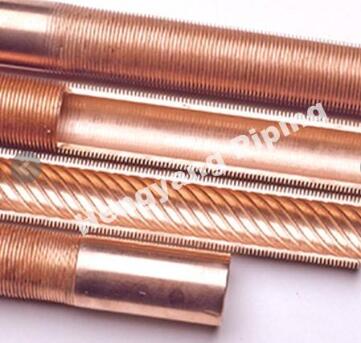Jun. 26, 2023
Minerals & Metallurgy
In the world of heat exchangers, there are various types of tubes designed to enhance heat transfer efficiency. One such type is the low fin tube, a specialized tube that plays a crucial role in optimizing heat exchange processes. In this article, we will delve into the details of low fin tubes, their construction, advantages, and applications. By the end, you will have a comprehensive understanding of these tubes and their significance in the realm of heat exchangers.
Introduction to Low Fin Tubes
Low fin tubes, also known as integral finned tubes, are heat exchanger tubes with external fins that are formed by a cold forming process. The fins are an integral part of the tube itself and are typically made of the same material. These fins extend the surface area of the tube, allowing for increased heat transfer between the fluid inside the tube and the surrounding medium.
Construction and Design
Low fin tubes are manufactured by a process called finning, which involves the creation of fins on the outer surface of the tube. The fins are typically helical in shape and are uniformly spaced along the length of the tube. The finning process significantly increases the surface area of the tube, leading to improved heat transfer efficiency.

The fins on low fin tubes can vary in height and thickness, depending on the specific application requirements. The number of fins per unit length, known as the fin density, also affects the performance of the heat exchanger. Higher fin densities result in increased heat transfer rates but may also lead to higher pressure drops.
Advantages of Low Fin Tubes
Low fin tubes offer several advantages that make them a preferred choice in various industries. Here are some key benefits associated with their usage:
Enhanced Heat Transfer Efficiency
The primary advantage of low fin tubes is their ability to enhance heat transfer efficiency. The extended surface area provided by the fins allows for improved heat exchange between the fluids, resulting in more effective cooling or heating processes. This increased efficiency translates to better performance and reduced energy consumption.
Compact Design
Due to their enhanced heat transfer capabilities, low fin tubes enable the design of more compact heat exchangers. This compactness is especially advantageous in applications where space is limited. By using low fin tubes, heat exchangers can achieve high heat transfer rates while occupying a smaller footprint.
Cost Savings
The improved heat transfer efficiency and compact design of low fin tubes can lead to significant cost savings. These tubes facilitate the design of smaller heat exchangers, which require fewer materials and incur lower manufacturing costs. Moreover, the enhanced performance reduces the energy consumption of the system, resulting in long-term cost savings for the end user.
Applications of Low Fin Tubes
Low fin tubes find applications in various industries where efficient heat transfer is crucial. Some common applications include:
HVAC Systems
Low fin tubes are extensively used in heating, ventilation, and air conditioning (HVAC) systems. They enable efficient heat transfer in both heating and cooling processes, enhancing the overall performance of the HVAC system.
Power Generation
In power generation plants, low fin tubes play a vital role in heat exchangers used for cooling turbine condensers, boilers, and other equipment. By maximizing heat transfer efficiency, these tubes contribute to the optimal functioning of power generation systems.
Chemical Processing
The chemical industry often requires precise temperature control during various processing stages. Low fin tubes provide excellent heat transfer capabilities, allowing for efficient temperature regulation in heat exchangers used in chemical processes.
Refrigeration and Air Conditioning
Low fin pipes are also employed in refrigeration and air conditioning systems to facilitate effective heat exchange. By efficiently transferring heat between the refrigerant and the surrounding environment, these tubes enable the cooling or heating of spaces and substances.
Conclusion
Low fin tubes are essential components in heat exchangers, offering enhanced heat transfer efficiency and compact design advantages. Their ability to optimize heat exchange processes makes them indispensable in various industries, including HVAC, power generation, chemical processing, and refrigeration. Understanding the significance of low fin tubes in heat exchangers empowers engineers and designers to make informed decisions when selecting the most suitable heat transfer solutions for their applications.
If you are interested in sending in a Guest Blogger Submission,welcome to write for us!
All Comments ( 0 )